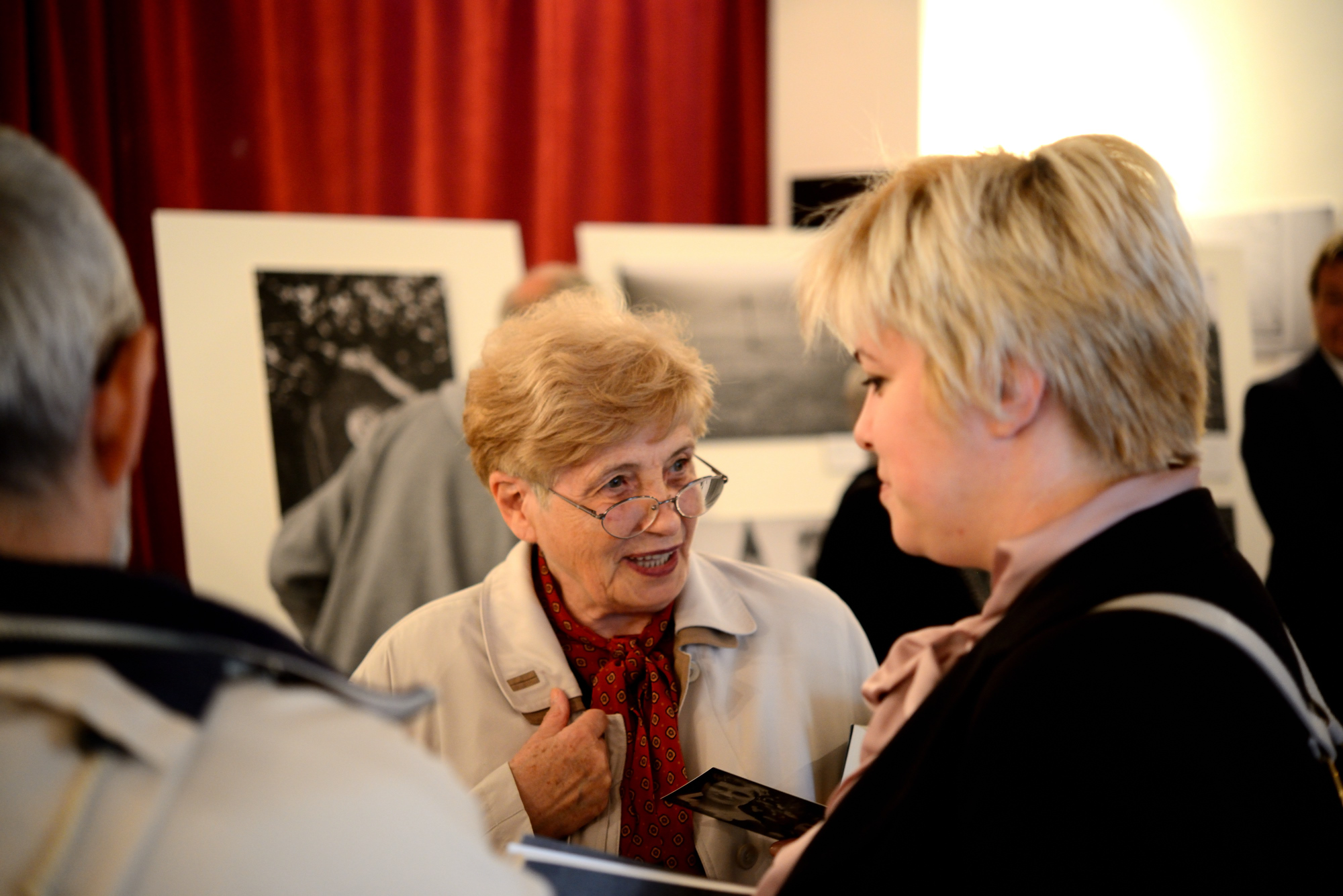Apatin Cultural Centre, 4 October 2018
After it ‘debuted’ in Belgrade in December 2017, on 4 October 2018, we opened the exhibition in Apatin. The exhibition had been well received in Belgrade, but we also wanted to put it on display in Vojvodina as the area most directly addressed by the research and photographs.
Prior to the exhibition in Belgrade, we were contacted by the Apatiner Gemeinschaft from Germany, an association of people from Apatin and their descendants. Guido Stein from the association also spoke at the opening of the exhibition in Belgrade and we later arranged to organise the exhibition in Apatin in October this year. It all started with a letter from Germany and developed into a warm-hearted and pleasant cooperation. It was thanks to this cooperation that we were able to organise the exhibition together with the Adam Berenc and Apatiner Gemeinschaft associations. The Apatin Cultural Centre graciously provided the exhibition space, which was also valuable in signalling the importance of this topic for the town of Apatin.

The exhibition was opened by Boris Mašić on behalf of the citizens of Apatin and the Adam Berenc association, and we also heard from Nedžad Horozović, one of the photographers, Helena Rill, a co-author of the research study, Dr Zoran Janjetović, a historian from the Belgrade Institute for Contemporary History who had studied the Danube Swabians, and Guido Stein and Petar Mijatović from Apatiner Gemeinschaft. Most of the speakers referred to Apatin and the people who used to live there and those still living there now. It was as if those who are no longer there were with us again in Apatin.
The visitors were mostly people with a personal connection to the Danube Swabians. However, there were also those with an interest in this topic on account of having come to reside in the area through colonisation, who had known the Swabians who used to live there or who remained… One man recognised the gravestone of his uncle on one of the photographs, after being unable to find it at the Apatin graveyard. People came from Apatin, Sombor, Subotica, Ratkovo by Odžak, Lovćenac, Prigrevica, Sanišići, etc. Although some of these places are not located close to Apatin, there are traces of the Danube Swabians in all of them and people interested for various reasons to see these traces and learn more about them. It is not often that an exhibition brings together people from different parts of Vojvodina.

The visitors had different responses to the photographs they saw. Some felt they needed to tell their own stories, about how their parents had been in the Kruševlje camp, some were moved, nodding in silence. Some could not decide whether to get the book in Serbian or in German. Some came to get the research study for someone to whom it was important but who could not attend the exhibition. People talked with each other and exchanged impressions of what they saw and how the photographs made them feel.
And finally, it was good to have this exhibition in Apatin, to remember our “neighbours” who used to live there, with us or by our side, but who were almost completely “erased” by historical circumstances. It was once the Danube Swabians, and there were also others in the more recent past… It was also valuable to connect with people from different sides, with different experiences, and open this exhibition together.
The feeling after the opening of the exhibition in Apatin reflected the cooperation that led to organising the exhibition: it was kind, warm, necessary. The impression we got was that what we had done was important to people who came to the opening and that they had a strong personal relationship to the photographs, the research study and to what we were hoping to achieve with these activities.
For more information and if you have not yet read the research study, it is available for download HERE
The photo gallery HERE